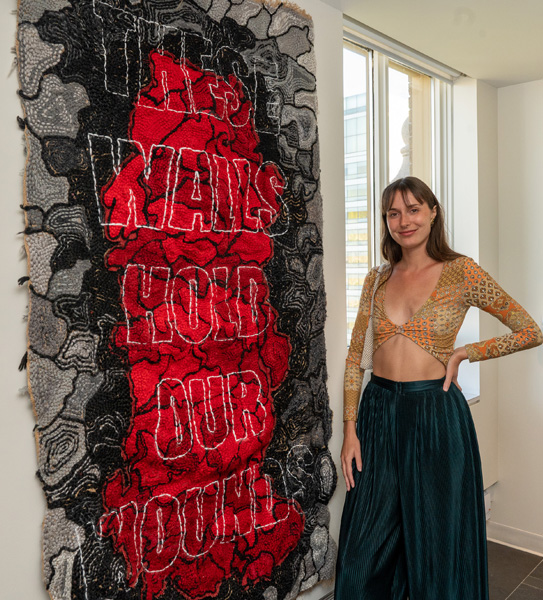Erin Storus is completing a Master of Visual Studies in Curatorial Studies at the John H. Daniels Faculty of Architecture, Landscape, and Design. She is one of three curators of the JHI's 2022-23 Art Exhibtion The Centre Cannot Hold: Labourious Memories, and throughout the year we'll be focusing on each curator to learn more about the artists and works they chose. The exhibition is open to the public during regular business hours until June 30, 2023.
 The business practices of transnational corporations have come under increasing scrutiny as determinants of ill health and health inequity. While the occupational and environmental health hazards of mining are long recognized, the transnational dimensions of mining industry harms have received inadequate attention. Nowhere is this global health issue more pressing than in the Canada-Latin America mining nexus: 50–70% of Latin American mining activity involves Canadian companies, with significant health injustice consequences.
The business practices of transnational corporations have come under increasing scrutiny as determinants of ill health and health inequity. While the occupational and environmental health hazards of mining are long recognized, the transnational dimensions of mining industry harms have received inadequate attention. Nowhere is this global health issue more pressing than in the Canada-Latin America mining nexus: 50–70% of Latin American mining activity involves Canadian companies, with significant health injustice consequences.
Canadian mining giant Barrick Gold, the world’s largest producer of gold, lies at the heart of mining-environmental tensions in Chile. Barrick’s interests and the interests of the communities in which it operates are pitted directly against each other. On average, it takes 79 tons of water waste to extract one ounce of gold, with metal mining producing 96% of the world’s arsenic emissions. The process involves grinding up ore, and then exposing it to cyanide to extract the gold. This in turn pollutes the fresh drinking water in the areas in which mines operate, rendering whole rivers poisonous to communities. Moreover, gold mining produces high mercury content in the air, causing significant health issues.
The works in the group exhibition, These Walls Hold Our Wounds, directly reference the disastrous impact of mining operations on Chilean communities, pointing to Canada’s role in enabling environmental hazards and police-based violence against local communities for the sake of extracting gold for money. Chilean artists Soledad Fátima Muñoz, Bélgica Castro Fuentes, and Amaranta Ursula Espinoza Arias employ arpillera craft textile practices to reveal dislocation and expropriation of colonial-based Canadian mining practices in their native land, approaching art as activism to expose systems of oppression.
Created in response to the Munk School's support of Barrick Gold's mining operations in Chile, the textile work These Walls Hold Our Wounds by artist Soledad Fátima Muñoz attests to the University of Toronto’s complicity with the ongoing destruction of communities and environments in Chile. If you look out the window directly to the right of this piece, you can see the terracotta roof of the Munk School, named after former Barrick Gold CEO Peter Munk, which sits at the corner of Bloor Street and Devonshire Place.
As Chileans continue dialogues regarding democracy, power, and resistance, the arpillera tradition persists as a relevant and dynamic form of cultural and political expression.
The exhibition is open to the public during regular business hours - Monday to Friday from 9am to 4pm. Tip: Call ahead (416-978-7415) if you are planning to come see the exhibition to make sure that all works are accessible. Since the JHI is a working space, some of the rooms may be in use.


